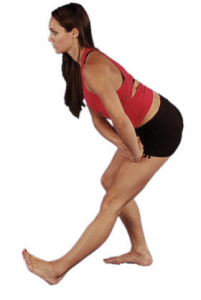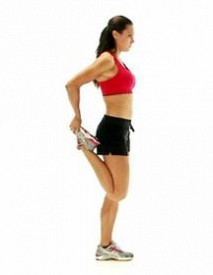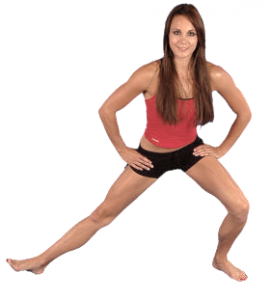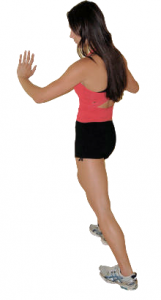With summer quickly approaching, we’re all looking to find ways to be healthier and get into better shape. A lot of us turn to running as a vigorous form of exercise to help boost cardiovascular fitness and lose winter-weight.
In an ideal runner’s world, every step of every mile would be 100 percent pain-free. No aches, no twinges, no lingering soreness from yesterday’s workout. The reality is that many runners constantly deal with some form of pain. Although the odd bit of muscle soreness and stiffness is to be expected from any training regime, sometimes pain can be an indicator of something more.
A common problem seen too often when people start running, is increasing the intensity and/or duration of their training too quickly, which can lead to pain and injury. While these nagging issues often aren’t serious enough to require a time-out to start off with, if not managed properly, pain can develop into more long term problems such as:
- Achilles Tendinopathy
- Shin Splints
- Iliotibial Band (ITB) Friction Syndrome
- Hamstring Strain
- Runner’s Knee
- Plantar Fasciitis
- Stress Fracture (tibia, calcaneus, metatarsal)
- Groin pain
- Back pain
These problems tend to arise as a result of too much load for the tissue (muscle, tendon, bone) to sufficiently adapt to. This is when tissue failure occurs resulting in injuries such as a tendinopathies, muscle strains, ligament sprains or in more serious cases, stress fractures.
Common risk factors are increasing your training regime too quickly, or having a slight bio-mechanical imbalance at the low back, hip, knee, or ankle causing an abnormal amount of stress going through one or more tissue structures.
To help prevent any injuries occurring, here is 6 ways to help your body prepare for running and reduce the likelihood of pain….
1. STRETCHING:
Although there is some controversy regarding the benefits of stretching for injury prevention, it does help keep muscles supple and flexible which is important for maintaining a good range of motion at your joints. Stretching can also be beneficial when targeting specific muscles groups that have become short over time as a result of an activity or prolonged posture carried out on a daily basis, for example sitting at a desk for long hours of the day can cause our hamstrings (muscles in the back of our thighs) to become short. This can restrict how the hip and pelvis moves during walking/running, and can lead to injury directly at the hamstring or in the lower back. Below are some easy stretches to keep your legs supple (always take the stretch to a point where it is still comfortable and hold for 30 seconds to 1 minute until you feel the muscle release):
Hamstring stretch:

Step forwards with one foot and keep that leg straight. Put all your weight into the rear foot, bend the knee and lean forwards keeping your back straight. You should feel a stretch into the back of the thigh. Hold for 30 seconds – 1 minute.
Quads stretch:

Standing on one leg, bring one foot up behind you and support it with the opposite hand. Allow the leg to relax into stretch, for a larger stretch, push the knee backwards. If you feel unbalanced, support yourself by holding onto a secure object. You should feel a stretch down the front of your thigh.
Adductor Stretch:

Stand with your feet twice the width of your hips. Shift your weight into one foot whilst bending the knee at the same time. Keep the other leg straight, and maintain an upright posture. You should feel a stretch down the inside of your thigh of the straight leg.
Calve stretch:

Face a wall and place both hands out in front of you for support. Step one foot forwards, shift your weight into the front foot whilst bending the knee, keep rear leg straight and heel on the floor. Always maintain a straight back. You should feel a stretch down the back of your lower leg of the rear leg.
2. STRENGTH AND BALANCE:
Most injuries occur when the body is fatigued, and adopts a different way of moving to keep up with the intensity. Moving efficiently, allows your body to train faster and longer with less effort (therefore reduces the risk of injury) – something every athlete wants. This requires a combination of strength and balance that works in unison to produce efficient movement. Adding a program to your regime that focuses on these areas will supplement your running and help prevent injury.
strength program (predominately focused on the legs and core) not only helps improve running economy- how efficiently the muscles uses oxygen, which translate into greater speed and more muscle endurance, but specific exercises can help strengthen areas which can be susceptible to early fatigue (which can result in compensatory movement patterns) and increase the risk of injury. For example, early fatigue of the muscles that control the hip, can cause too much internal rotation of the leg during weight bearing, resulting in increased stress put through the knee which can lead to pain/injury at the hip, knee, or ankle.
Balance also naturally declines with age if you don’t work on it. Balance is derived from sensory nerve endings (proprioceptors) in muscles, tendons and ligaments that sense positional changes in the body. Incorporating balancing exercises to your regime will also help improve your muscle reaction time and joint proprioception, helping you avoid injury when negotiating traffic, uneven pavement, pedestrians, and any number of distractions that require you to stop or shift your weight suddenly.
Below are a few exercises that focus on balance and strength:
Stork Stand:
Stand barefoot on a stable surface. Lift one leg and bring the bent knee toward the chest while maintaining an upright stance (don’t move your hips). Balance on one leg for 15 to 20 seconds. You can make this exercise more challenging by taking your arms out to the side and moving them in circles.
Hip Swings:
Stand on one leg on a stable surface. Bend the other knee and swing your leg forward while maintaining an upright stance. Control the momentum by holding each end position for one second. Keep your knee bent throughout the swing. You can also include lateral swings (going out to the side) to work the adductors and abductor muscles. Try to maintain a straight back throughout.
Single-Leg Forward Reach
Balance on one leg; lift the other leg behind you. Lean forward; reach the hand (opposite to the leg you’re standing on) across and down to weight-bearing foot. Return to an upright stance, staying on one leg. Try to maintain a straight back throughout.
Lunge Walks:
Take a large step forwards, slowly lower yourself down to ground by bending the front knee and hip, until the back knee makes contact with the ground. Focus on keeping the front knee out, and keeping your back straight. Rise back up and repeat on the other leg.
Squats:
Take stance that is slightly wider than the hips. Makes sure the feet are pointing forward. Push your chest out slightly to keep the back straight, and look forwards and slightly up. Brings your arms out in front of you (this will help aid balance). Relax the knees into a slight bend and then screw the knees out slightly. Making sure your body weight is through the heels, tense your core, slowly lower yourself down by bending the knees and hips, until your hips are at knee height. Then slowly rise up into the stand position. It is important to keep the back straight, push the hips backwards and keep the knees out when going down into a squat and rising back from it.
3. FOOTWEAR:
Footwear is one of the most important bits of equipment for runners, of all levels. Worn-out or ill-fitting shoes are a leading cause of injury, it is therefore essential to invest in a good pair of shoes. Wear and tear is not always apparent to the naked eye, and shoes should be replaced roughly every 300-500 miles.
It is important to try on as many different models and pairs as possible. Don’t shop by price or by fashion. It’s best to go to a specialty running shop where a salesperson can watch you run and help you select a pair of shoes that offer your feet the support they need.
4. DIET:
Generally, good nutrition is essential for the body to function and repair optimally. Exercising uses a lot of your body’s resources, as well as increases the stress put through muscles, joints ligaments and tendons. In order for our body to effectively adapt and change (get fitter, stronger) to the stresses (i.e. exercise) we place on it, it needs the right nutrition. Incorrect diet can lead to poor performance which can increase the risk of injury, as well as slowing rate of healing.
Below is a list of foods that will help you train:
Protein:
When exercising, micro-trauma (small tearing) occurs in muscle so that it can adapt and grow stronger. In order the body to repair it needs protein to rebuild the muscles. Healthy sources of protein are found in meats, fish, eggs and beans.
Calcium:
This helps keep our bones dense, and muscles functioning. Most people think calcium sourced from dairy products like milk, cheese and yoghurt. But if you’re trying to reduce your dairy intake, try oranges, almonds, green leafy vegetables such as broccoli and cabbage and small fish with the bones included.
Fats:
Considering fat to be nutritional may be confusing, especially if you are trying to lose weight. However, fat is an important component your body needs to surround your cells and regulate your hormones. That being said, fat is only needed in very small quantities and it is important to choose only the good fat. Good fats are mono-unsaturates found in nuts, seeds, avocado, olives, and oily fish such as salmon and mackerel.
Carbohydrates:
These are the most important fuel for muscles, and an essential energy source for the brain and central nervous system. Carbohydrates are stored as glycogen in the muscles and liver. These stores are small, so a regular intake of carbohydrate is necessary to keep them topped up. Low glycogen stores will result in poor performance and increase the risk of injury. Eating complex carbohydrates, or sugars teamed up with fibre (e.g. fruit) will digest slower and provide energy over a longer period of time. This will help prevent you from getting tired too quickly whilst training, as well as helping you to maintain exercise intensity. Complex carbohydrates are found in whole grains cereals and breads, vegetables, fruit, nuts, legumes, and seeds.
Vitamins and minerals:
They play a key role in helping the body to function. Different vitamins and minerals serve different roles, e.g. vitamin D helps the absorption of calcium needed to maintain bone density and muscle function. Generally you receive most of your daily recommended allowance through a balanced and varied diet of fresh fruit, vegetables, fish, meat, nuts, eggs and seeds.
5. TRAINING PROGRAMME:
Knowing where to start with you training can be daunting and can end up being a bit of a guessing game for most of us if we’re not used to it. If you are unsure of how fit you are, before planning a training program its best to go for a preliminary run. This should be relatively short (roughly a mile), and take note of the pace your taking, how long the run took, how you felt during it, and the time it took for your heart rate to return to normal. From here, you have a better idea of your starting fitness level, and know roughly the miles to start running at.
Important factors such as lifestyle and age need to be considered when starting a training regime. For example, a middle-aged man with a full-time desk job will need to start off on a lower miles and progress it slower. Compare this to a 25 year old full-time cleaner, who is generally more active and will therefore have a better baseline of fitness and strength.
Progressing you training in terms of intensity (how fast you’re running) and duration should always be slow, to allow the body a chance to effective adapt to the demands being placed upon it.
Always listen to your body, if you’re really struggling or in pain, it’s better to stop than to ‘train through the pain’. By listening to your body and progressing your training at rate that is suitable for you, this will significantly reduce the risk of injury.
6. INJURY AND PAIN MANAGEMENT:
Think of running pains in terms of a spectrum. At one end you have severe, full-blown injuries—call it the red zone, which includes stress fractures that require time off. The other end, where you’re in top form, is the green zone. Mild, transient aches that bug you one day and disappear the next sit closer to the green end. Unfortunately, many runners get stuck in the middle—the not-quite-injured but not-quite-healthy yellow zone.
Whether you land in the red, linger in the yellow, or return to the green end of the spectrum depends largely on how you react when that first stab of pain hits.
Often it comes down to whether you take a little time off now or a lot of time off later. You can reduce your risk of ending up in the red zone if at the first sign of an issue, you back off your mileage, reduce the intensity of your runs, start a treatment program, and develop a proactive long-term injury-prevention strategy.
Most issues can be dealt with by looking at your training and your biomechanics (which can be assessed by an osteopath) to determine how to approach the problem. After all, while a bag of frozen peas and rest might help ease the pain, you won’t prevent re-injury unless you find and fix the underlying cause.
http://www.sportsinjuryclinic.net/rehabilitation-exercises/stretching-exercises/standing-quadriceps-stretch (quad stretch)
http://www.teachpe.com/stretching/standing_hamstring.php (hamstring and adductor, calve stretch)
